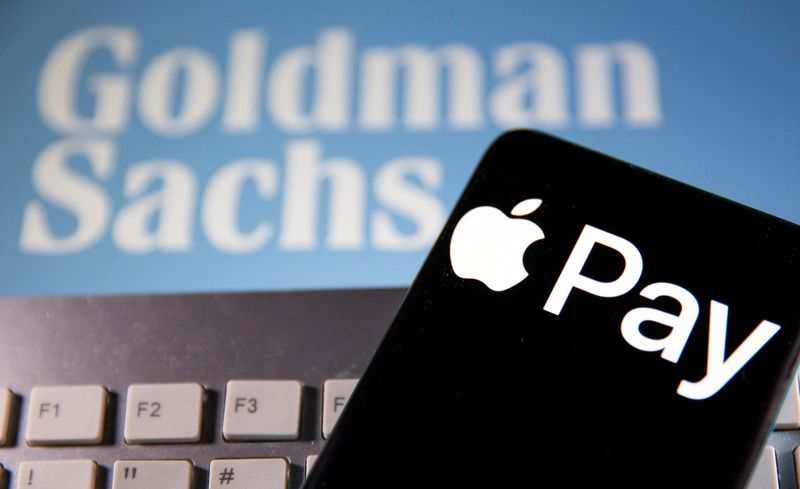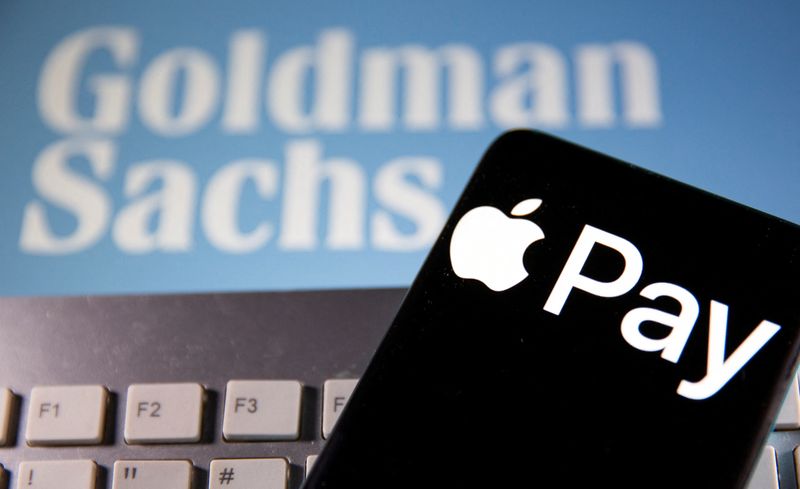
By Nupur Anand
NEW YORK – Apple (NASDAQ:AAPL) is in talks with Barclays (LON:BARC) to replace Goldman Sachs as the tech giant’s credit card partner, said two sources familiar with the matter, as the Wall Street giant steps back from its consumer finance ambitions.
Credit card issuer Synchrony Financial (NYSE:SYF) is also in discussions with Apple about the card partnership, the first source said. Both sources declined to be identified discussing private talks.
Several financial firms are vying to replace Goldman, which launched the credit card with Apple in 2019, the sources said. While other lenders are tempted by working with Apple, one of the world’s most recognizable brands, they also viewed the original deal terms as risky and unprofitable, sources told Reuters in December 2023.
Negotiations between Apple and Barclays have been ongoing for several months, but it may still take months to strike a deal, the first source said.
JPMorgan Chase (NYSE:JPM) has also been in talks with Apple about the business since last year, Reuters reported previously.
Representatives for Apple, Goldman, Barclays and JPMorgan declined to comment. Synchrony did not immediately respond to a request for comment.
Goldman’s credit card deal with Apple lasts until 2030, but the partnership may end sooner than that, Goldman CEO David Solomon told analysts on an earnings call on Wednesday.
In 2024, Goldman transferred its General Motors (NYSE:GM) credit card business to Barclays that allows customers to earn and redeem reward points on new Buicks, Cadillacs and other GM cars, including electric vehicles. The deal enabled Barclays to expand its card footprint in the U.S.
Goldman entered the consumer business nearly a decade ago, aiming to broaden its revenue beyond its traditional mainstays of trading and investment banking. By late 2022, the Wall Street powerhouse decided to scale down its retail ambitions after setting aside billions of dollars to cover potential losses in the business.

